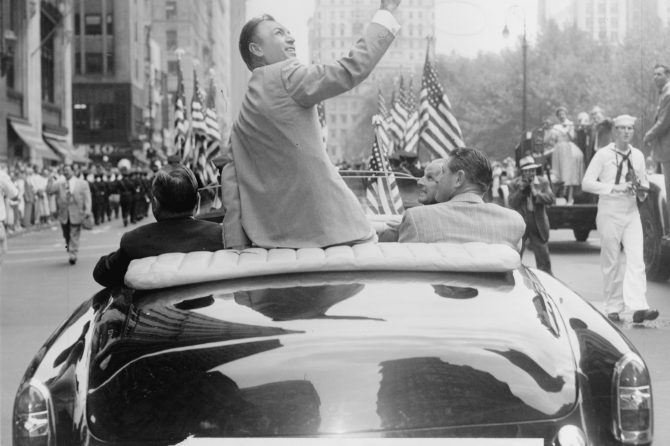Elevating Golf Performance: Mastering Subtle Strategies
Golf is a sport that demands not only physical skill but also mental sharpness. To truly excel on the course, players must adopt a comprehensive approach that goes beyond basic techniques. While foundational skills are essential, it is often the nuanced strategies employed by experienced golfers that set them apart.
This article explores the sophisticated tactics utilized by top golfers, focusing on key areas such as green reading, strategic tee shot placement, and effective course management. Additionally, we will examine how psychological factors influence decision-making in golf.
Mastering Green Reading: The Art of Putting
The ability to read greens effectively is crucial for successful putting. This skill involves understanding various elements such as the slope of the green and environmental conditions like wind speed.
- Slope Awareness: Experienced golfers can identify subtle slopes and contours on the green that affect ball movement. They utilize visual indicators from previous putts or surrounding terrain to inform their shot decisions.
- Estimating Green Speed: Knowing how fast a green rolls is vital for accurate putting. Players often observe practice putts or consult with course staff to gauge speed before making adjustments to their stroke power.
- Mental Visualization: Skilled players visualize their entire putt path while considering breaks and slopes along the way. This mental rehearsal helps them select appropriate lines and speeds for each shot.
Tee Shot Strategies: Navigating Course Challenges with Precision
The placement of tee shots plays a pivotal role in setting up subsequent shots throughout each hole. Proficient golfers analyze factors like course layout and wind direction to determine optimal tee locations.
For instance, when facing a dogleg right hole, positioning your tee shot towards the left side can significantly shorten your approach distance while providing an unobstructed line to the pin. Conversely, on narrow fairways bordered by hazards, aiming for center alignment may be more prudent.
| Hole Type | Tee Shot Location | Benefit | Risk | ||||
|---|---|---|---|---|---|---|---|
| Doglef Right | Left side of fairway | Easier access to green | Potential hazards left |
Course Management: The Key to Successful Golf Play
A well-rounded strategy encompasses effective course management—an essential component in maximizing performance through informed decision-making during playtime. Seasoned golfers assess every aspect of their surroundings—from potential hazards to weather conditions—to plan their shots wisely and mitigate risks effectively.
- Selecting Shots Wisely:The choice of club and trajectory directly impacts distance control; thus understanding both environmental factors and personal strengths allows players better navigation around obstacles.
- Evaluating Risks vs Rewards:Golfers must weigh potential risks against possible rewards when deciding which shots are worth taking—sometimes opting for conservative plays over aggressive ones can prevent costly mistakes.
Advanced Shot Shaping Techniques for Golfers
Skilled golfers have mastered manipulating ball trajectory through advanced techniques known as shot shaping—allowing them greater precision when navigating obstacles or targeting specific areas on greens.
To achieve this mastery requires knowledge about clubface angle relative swing path alongside proper ball positioning—all critical components influencing desired outcomes.
By honing these skills further enables players:
– Navigate around hazards seamlessly
– Land balls accurately within target zones
– Execute precise approaches leading lower scores
| Shot Type | Clubface Angle | Swing Path | Ball Position | Spin Effect
| < b >Draw< b />
| Slightly open< / td >
|
| Slightly inside< / td >
| Sidespin< / td />
| Achieving consistent excellence hinges upon mastering subtle techniques integral optimizing performance . Integrating refined methodologies into gameplay enhances overall results minimizes stroke counts significantly . Green Reading & Strategic Course Management :Shot Shaping & Ball Control :Psychological Factors Decision-Making :
Golf is not just a game of strength and precision; it is a complex interplay of psychological and technical skills. Subtle techniques can significantly enhance a player’s performance, enabling them to maneuver the course more effectively. Successful putting begins with understanding the green. Consider these tips for effective green reading: Choosing the right spot for your tee shot is crucial. Here’s how to make informed decisions: Developing the ability to shape your shots can help in various situations: Your decision-making throughout the round can greatly impact your score. Focus on: Tip: Consistent practice is key! Dedicate time each week to focus on one specific subtle technique to see measurable improvements over time. Many professional golfers emphasize the importance of subtle techniques in their training regimes. For example, renowned golfer (Name withheld) often attributes their success to meticulous course management and shot shaping techniques learned over years of practice. Consider attending workshops or clinics where professional golfers share their experiences and methods. These opportunities can provide valuable insights into mastering the game. A local amateur golfer reported a significant decrease in three-putts after focusing on green reading. By analyzing putts from various angles and understanding the nuances of the greens, they improved their overall performance. Another case involved golfers who changed their teeing strategy based on course layout. By placing their tee shots in safer, more advantageous positions, they found their overall scores improved, even with the same number of strokes. While mastering the technical aspects of golf is essential, integrating subtle techniques into your practice and play can unlock your full potential on the course. As you refine these strategies, you’ll likely see tangible improvements in your performance. In this captivating exploration, we delve into the foundational principles of Ben Hogan’s legendary golf instruction, as masterfully presented in “Five Lessons: The Modern Fundamentals of Golf.” By meticulously analyzing swing mechanics, grip techniques, and posture, we reveal the timeless influence Hogan has had on elevating golf proficiency to new heights. Riviera to host Olympic golf for 2028 L.A. Games The Riviera Country Club will host golf at the 2028 Summer Olympics in Los Angeles, the International Golf Federation announced last week. The iconic course in Pacific Palisades, Calif., has been a PGA Tour stop since 1973 and has hosted three major championships. It will be the first time that Riviera has hosted the Olympics. “We are thrilled to have Riviera Country Club serve as the host venue for Olympic golf in 2028,” said IGF President Peter Dawson. “Riviera is one of the most iconic and challenging courses in the world, and it will provide a fantastic stage for the world’s best golfers to compete for an Olympic medal.” In the annals of golf, Raymond Floyd stands as a true icon, known for his exceptional swing technique and mental acumen. His signature “Floyd Fade,” characterized by pinpoint accuracy and effortless power, has been meticulously dissected in this article. Through an in-depth examination of Floyd’s swing mechanics, in collaboration with renowned coach Cary Middlecoff, this article unveils the intricacies of Floyd’s artistry. Moreover, it delves into the mental strategies that have guided Floyd’s tournament triumphs. By embracing Floyd’s insights, aspiring golfers can enhance their technical proficiency and develop the holistic approach that has made him a master of the game. |
|---|






